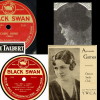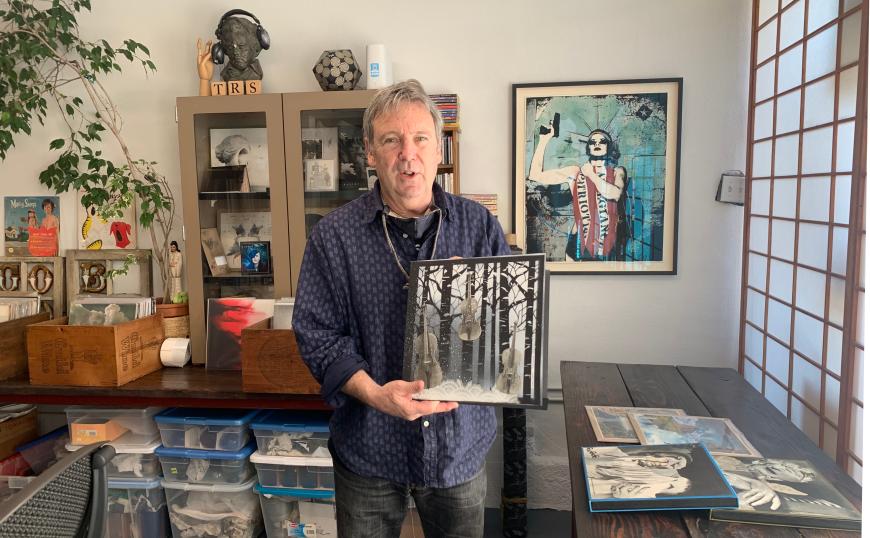
At a time when many listeners expect to access music for next to free and the demand for physical recordings — CDs, LPs, cassettes, wax cylinders — is at an all-time low, what could be more quixotic that running a limited-edition record label that specializes in distributing hard-copy albums to individual listeners?
Damning such market-trend torpedoes, Alameda artist Colin Herrick is sailing full steam ahead making and distributing such physical artifacts. And just to complicate the business model, he’s shipping each deluxe-edition copy in a meticulously handcrafted, one-of-a-kind package that stands on its own as a work of art.
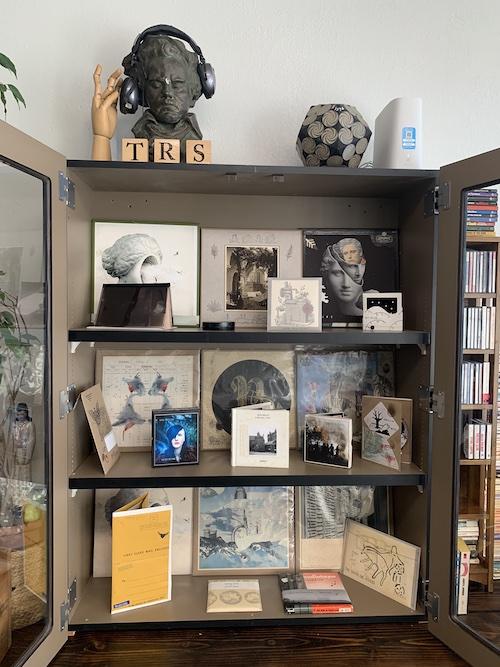
Herrick operates his business in a little storefront space in an old building in Alameda’s east end that long housed the Clock Shop, a landmark business in a little shopping area on Encinal Avenue, a few blocks from where I live. His partner, Maria Chenut, runs a wonderfully quirky gift shop called Moodswing in the main space, and Herrick’s workshop and retail space is in an adjacent partition. I dropped by recently to learn more about him and his work.
I asked him first off what had inspired him to found a record label in today’s music market. “You mean just when people stopped paying for music?” he asked. “Bad timing on my part! I wish I’d thought of it 30 years ago when we all bought our music in a physical format of some kind, before all of the digital-download and streaming options that there are now.”
Still, his boutique Time Released Sound label has, over the past 10 years, built a small-but-dedicated international following of enthusiasts and collectors willing to invest in his unique offerings. What’s the secret to his quiet success?
Herrick explains that his buyers are drawn to both the music and the art, but he gives an edge to the music itself:
“I would say that there are more people who are interested in the music as well as what I do [the artwork] than there are people who are into what I do as well as the music, so I doubt there are too many people buying my things who have no interest in that kind of music,” he said.
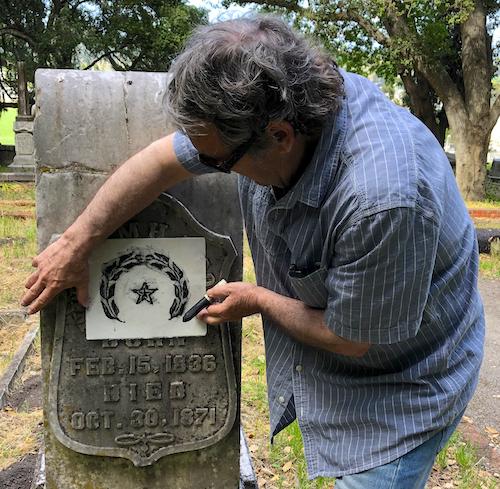
Herrick describes the sounds on his label as “cerebral, atmospheric, electronic, instrumental. Not vocal oriented at all. I’ve released some film soundtracks. I’m leaning more lately toward music of a more classical nature. I’m not releasing dance music or beat-oriented music for the most part.”
He has broad musical tastes and in-depth knowledge about a lot of genres, but explains, “After 50 years of listening, I found myself drawn to this kind of mellower, vocal-less, beatless, cerebral music that lends itself to playing in the background. I’d had enough of pounding drums — although I still listen to plenty of music with that — it’s just not the music I’m releasing myself.”
Herrick acknowledges that the rarefied musical world he represents also has a relatively modest market. But there’s an upside there, too. “Fortunately, I think the kind of music I ended up releasing appeals to slightly older people, perhaps — people with more disposable income,” he said. “I’m not selling to young kids that are listening to punk-rock bands. I’d guess most of my clientele is 30 to 60 years old. And I’ve been fortunate in that I’ve built kind of a cult or cadre that buys everything that I do. They’re the ones who have kept me in business. I probably have 40 or 50 people I can count on to buy all my stuff. But there are just a handful who have all 106 releases.”
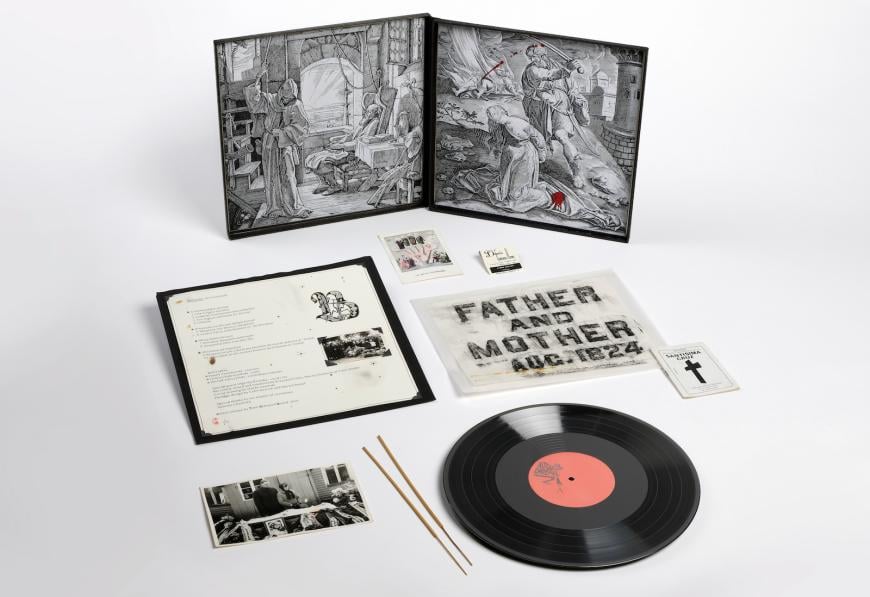
Recordings released this past year on TRS include the classical music project Himmelsrandt’s Allusionen (founded by and featuring German artist Peter Honsalek on piano, viola, and an early electronic synthesizer called the Volkstrautonium), French artist Catherine Watine’s Errances Fractales (the final album of her trilogy on the label), and Belarusian composer Lina Filopovich’s Magnificat (“mind-bending, pseudo-liturgical and potentially lysergic electroacoustic compositions”). Follow the links to hear samples and see the associated artwork, or go to the TRS shop pages to see the full range of offerings.
Herrick doesn’t perform or record music himself, and he’s generally hands-off about the music on his label. “The most I do is help with the mastering, if the musicians don’t have the capability or are just disinterested in doing their own mastering,” he said. “I’m completely clueless about all the technical aspects of this business, but I do use a few well-known mastering people who will help on our album. And I have talked artists into rearranging tracks or have done the sequencing myself on a few. But I don’t get involved in the making of the music at all.”
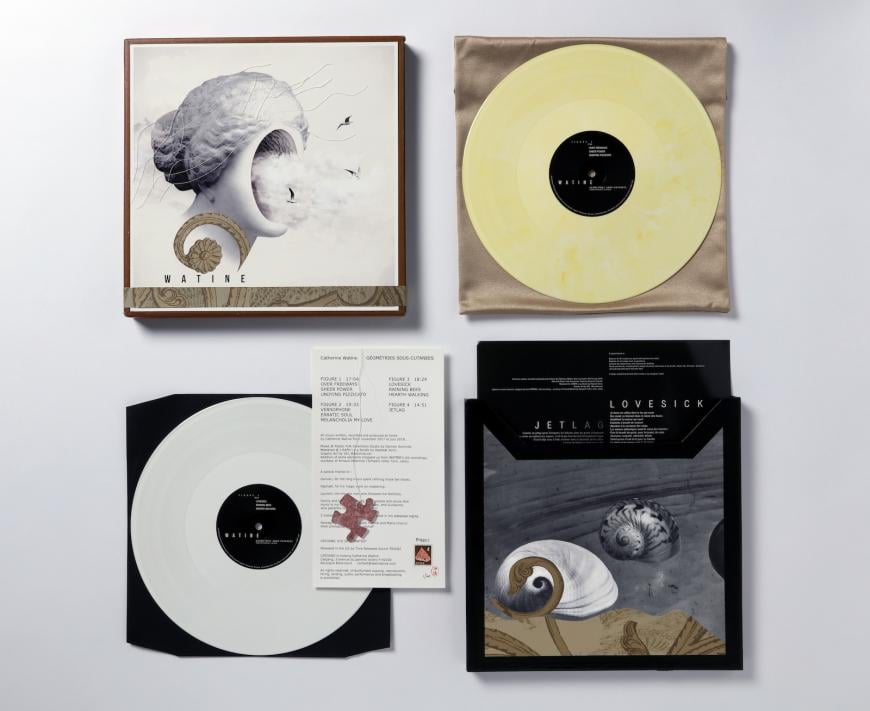
The manufacturing of the records themselves happens in Taiwan for the CDs or in New Orleans for the vinyl LPs. “I send digital files of the artwork and the music and they do it all and send me boxes of CDs and digipaks,” he said. “Vinyl I get pressed in New Orleans. The vinyl industry is completely out of control. It can’t keep up with the demand. There’s a total resurgence. Nobody wants CDs anymore, which is sad. I love CDs.”
When asked about the resurgence of interest in vinyl, Herrick is ambivalent. “I got excited when records came out because I thought to myself, ‘Wow, it’s bigger. Now I can do bigger things.’ It is kind of nice, but at the same time, it’s a headache,” he said. “Vinyl is much more fragile. CDs are much easier to ship. LPs have to be in a special box. Record collectors will send the record back if there’s a bent corner. Also, very few vinyl pressing plants will press the small quantities that I want. I don’t have much choice. As far as I know, the people I use in New Orleans are the only ones in the country who will press as few as 100 copies. And you have to pay a premium for that limited run — it can cost me $15 a record. If I got 500, it would less than half of that, but I don’t want to sell 500, because that puts me in the position of dealing with distribution, and I don’t want to have a room full of unsold vinyl. At the same time, I feel bad for the musicians I release. I’d love to sell 500 for them, but I’m not set up for that.”
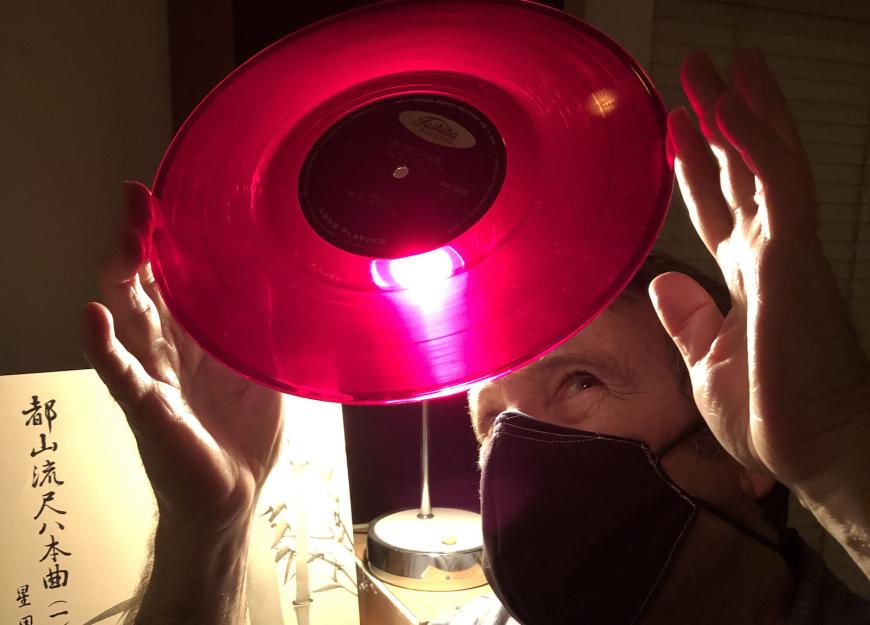
What he is up for is creating the artwork that makes his label unique.
“What drew me to doing this was that for years I had personally bought a lot of music in interesting packaging,” Herrick told me. “Since the ’70s people released cassettes in fancy little boxes that they made and letterpress record jackets and things like that. People have been doing what I’m doing for a long time. I’ve just taken it to a new level over the last 10 years.
“Ten years ago, I was buying from a couple of little labels in the U.K. that were doing things like making their packaging out of old library books with the library cards in them, and one day I just decided to do that kind of thing myself. I’ve been an artist most of my life and majored in printmaking in school, and have always made sculptural things out of old paper, and just started doing it.”
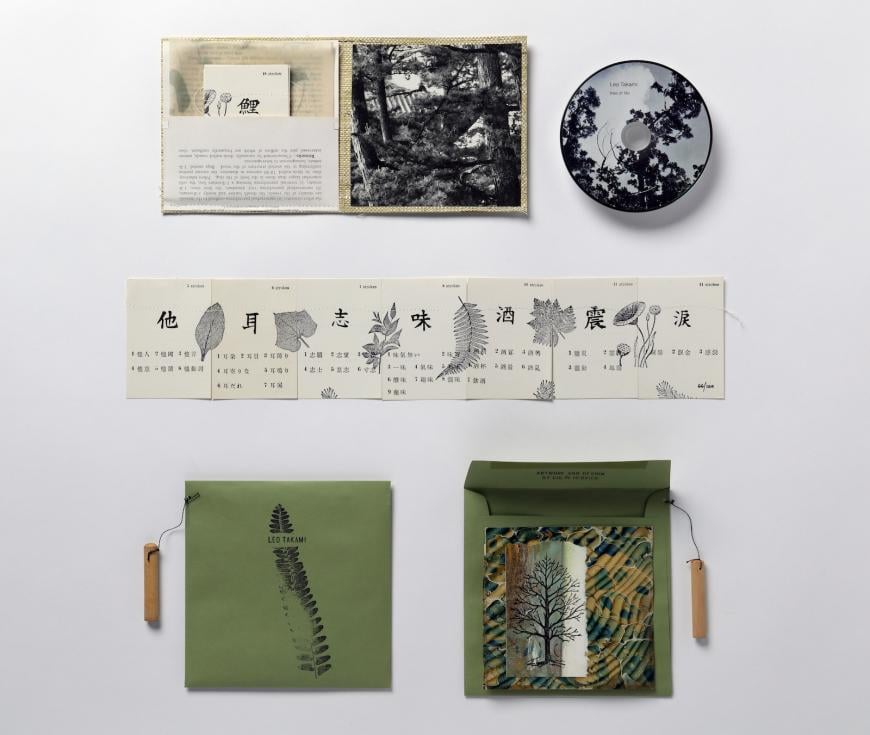
In fact, Herrick had so many ideas about the artwork for his releases that he began making it before he’d even lined up his first artist or heard any music. He explained, “I actually made the packaging for me first three releases without having any musicians in mind, so when I did approach artists it would be easier to show them something rather than trying to describe the idea. I finished the three packages in editions of 100, and then just started contacting some of the people in the musical scenes that I was into. The first three people who responded positively were my first three releases.”
His first release using his premade packaging was a Japanese ambient music artist, the second was an Italian electronic musician, and the third was another Italian. In that first year he had to scramble a bit to find artists for his label, but that soon changed. “Initially I searched people out, but now, for the most part, people submit demos to me. There are periods of time when I get a demo day, actually. Considering that I release one thing a month at best, it’s nice, because it gives me an opportunity to pick and choose the music that appeals to me the most.”
As for the artwork itself, Herrick’s work reminds me of the exquisite little boxes New York artist Joseph Cornell lovingly assembled at the beginning of the last century. I’m not far off in this observation. “Joseph Cornell was a big influence on me,” he said. And although his initial packaging ideas predated the music they eventually came to house, these days he often collaborates with musicians when putting together the artwork.
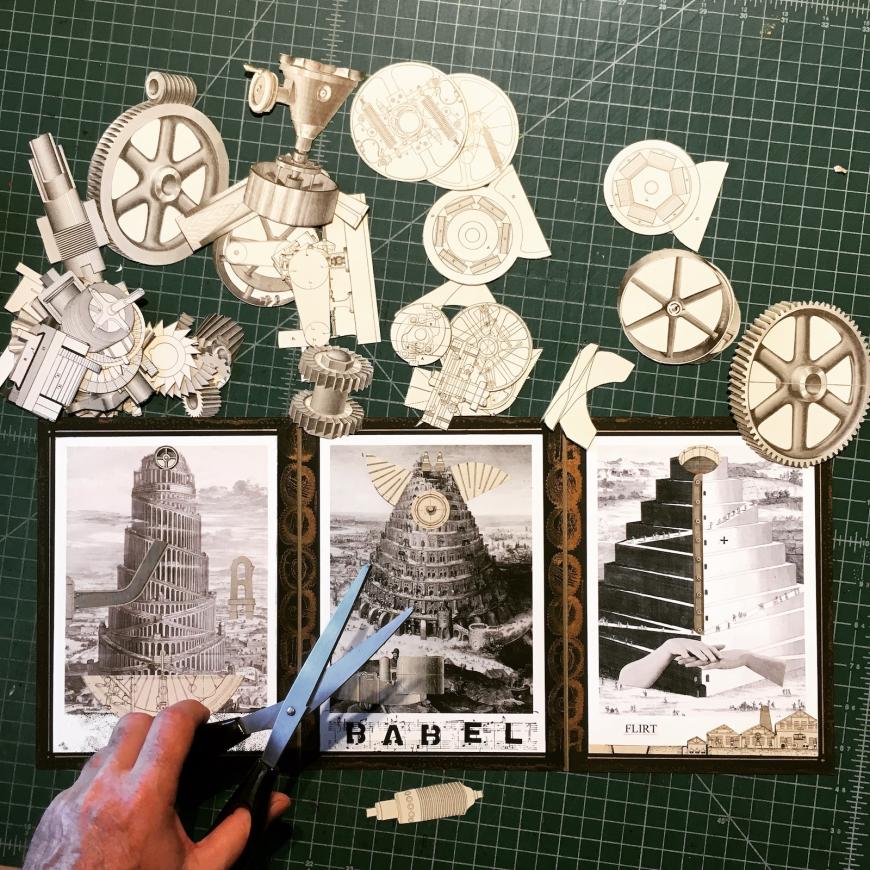
“I’m pretty good about asking the musicians about the conceptual nature of their music. Why do they make this music? What are the themes behind their music? That all gives me ideas for the packaging, and sometimes it’s really obvious.”
He offers an example: “One person’s album was all about airports and departure lounges and leaving and coming home, so when I did that, I made a very airport-centric package with old pages from pilots’ log books, pages from books on all the runways in the United States, with diagrams, and little glass airplane identification slides from WWII that are in the cover of the booklet.”
Other releases have been packed in ingeniously modified candy boxes, antique Russian film canisters, old reel-to-reel boxes, and even vintage police evidence bags. His workspace is brimming with art supplies, tools, rubber stamps, and neatly stored scraps, parts, and pieces, and the vintage materials he gathers for each project.
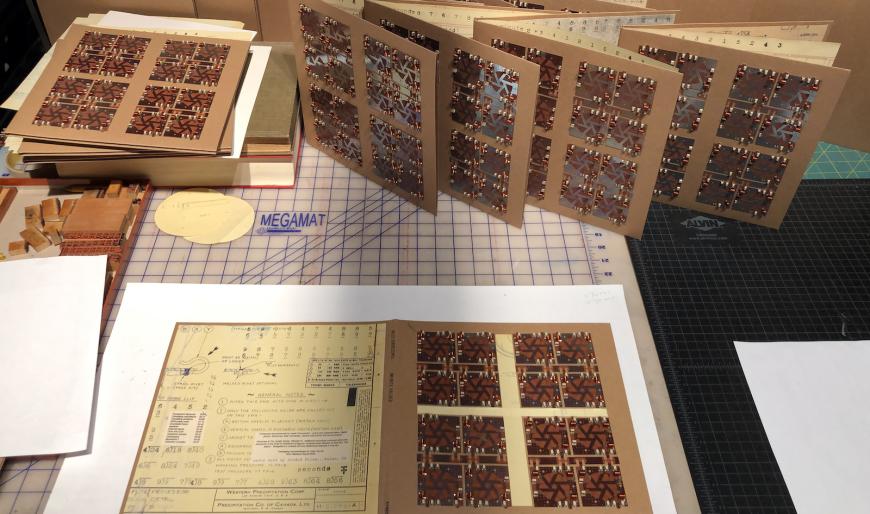
Most artists are happy to engage, but others just let Herrick create at will. “It’s a two-way street, and I like getting the musicians involved. Although some are really engaged and some musicians just throw their hands up and say ‘I like what you do, just do it.’”
Clearly Herrick’s time-intensive, hand-on approach doesn’t lend itself to volume-based sales. “When you think about the kind of things I’m making — these completely over-the-top, assemblages, sculptural pieces — there are limits,” he said. “In 10 years, I’ve done 103 [releases] on Time Released, and three more on my sublabel, Time Sensitive Materials, so that works out to nearly one a month,” he said.
“There are limitations to what I can do — packaging, shipping, and materials. Everything has a price point, and my things are already some of the more expensive items of this sort. I can’t suddenly make 500 hundred-dollar boxes,” he adds.
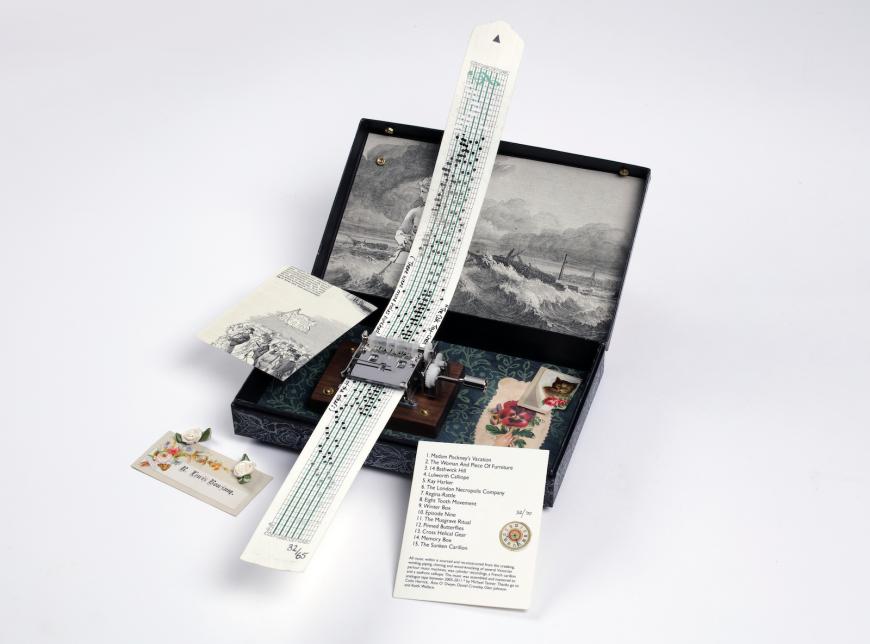
He does make some concessions to balancing the demand for the music with the limits of his ability to crank out the full-blown packaging. He said, “I do basically two versions of everything I release. I do the handcrafted objet d’art, usually in an edition of 50 to 100 copies. And although there are 100 of them, each one is different. They may have the same basic components, but each one is uniquely handmade. Very little is copied or reproduced. If I’m using pages from a real book as part of a collage, I’m not duplicating that — I’m actually finding enough pages to make each one different.
“So I do that deluxe edition and then I do a standard edition of that comes in either a CD digipak or a printed jacket. Those are not unique, but the standard release usually mirrors the components of the handmade version. Those runs are typically 100–200.”
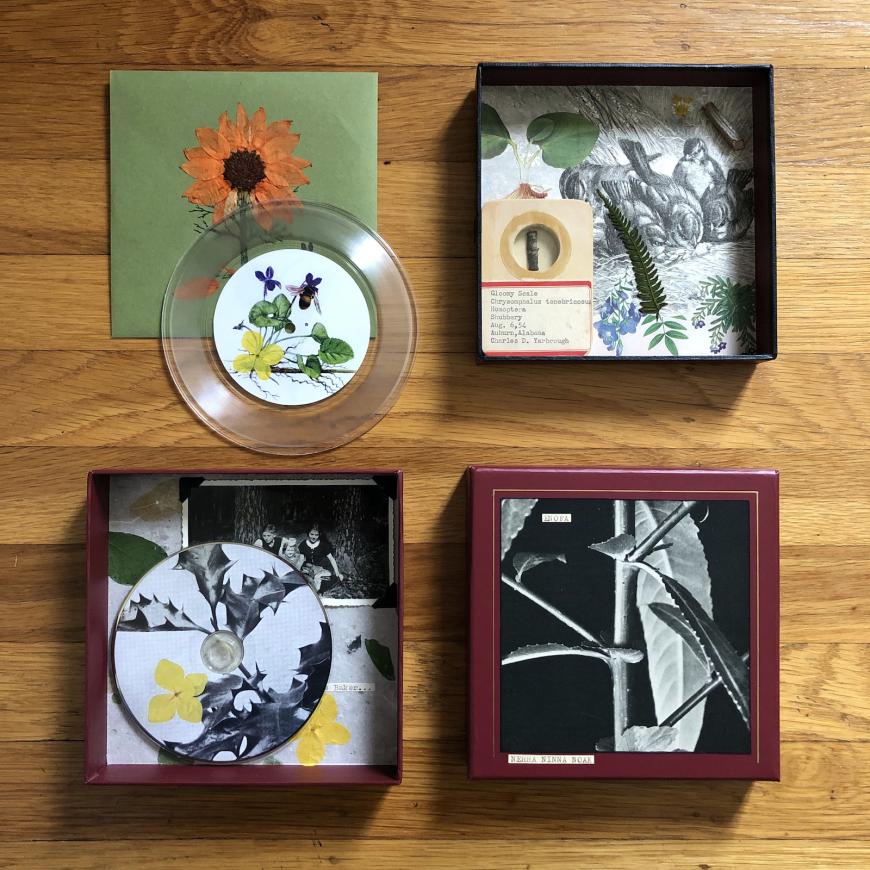
Herrick is sanguine about his limited output.
“Part of the reason for the low runs, is that I just don’t want to deal with distribution too much. My business model is that I’m trying to sell most of what I make myself, not only because I make more money that way, but it is just less hassle that way. I do have distributors overseas, but I don’t want to get too involved in that headache.
“I’m an artist and a reluctant business man — like most artists. I just want to make art and forget about the rest of the stuff. I have gotten better at being a business man over 10 years, but not as good as I should be. I don’t lose money on my material costs and I get paid for some of my time, but I get to do the thing I love. But that’s what’s so great about it. I love art. I love music. What I do is a collaboration of the two.”
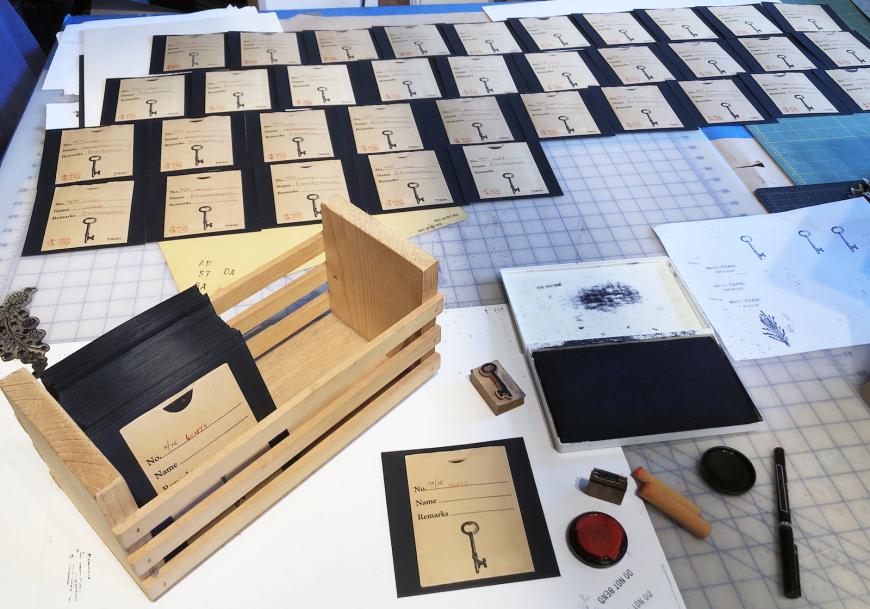
I asked Herrick about his business name: Time Released Sound. “When I first started the label, I knew early on that I wanted to use the clock as an integral part of my logo and imagery,” he said. “This was partly because a clock is round, like a CD and a vinyl record, and therefore lent itself nicely to packaging design in general. I then fell upon the idea of using the clock without hands as the official logo, thinking that when the hands of a clock are removed, time, and the keeping of time is removed as well, and it becomes in effect ‘timeless,’ like our label. This led to the name of my label itself: Time Released Sound. Both the music and our designs are not weighed down by time, nor constrained to a specific time.”
I didn’t think to ask whether he was aware of the previous tenant of their location, but I take it as auspicious that he and his partner opened their businesses in the old Clock Shop.
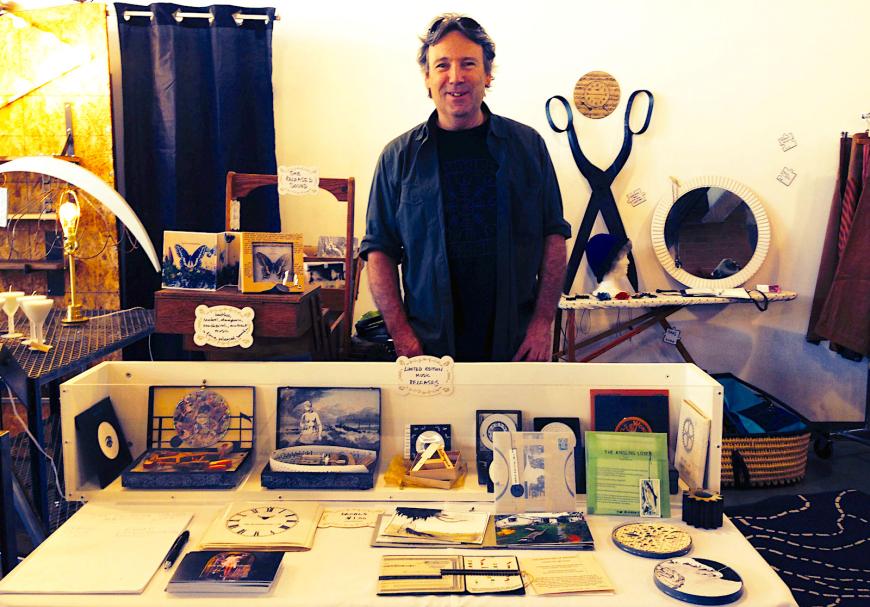
Even though the processes for packaging the product are very old fashioned, Herrick claims that it is the digital age that has made his business model possible. “Word of mouth” is essential for him, and social media outlets have made sharing that word possible on a global scale. He said, “I get a lot of reviews in blogs and magazines that cater to the kind of music I release.
“It’s a small world. Social media has been really good for me. I am constantly posting on Facebook and Instagram. I can’t imagine running this business 30 years ago. Before email? How could you possibly make that work? When I told you I wish I’d started it 30 years ago, I probably really don’t wish that.”
Even so, it’s a hard row to hoe. “It’s just getting harder and harder to sell music,” he admits. “I wouldn’t do what I do if I just released the standard versions. The fun is in making my things. I think there will always be a market for beautiful handmade objects. The only reason I started doing the standard versions was that I felt bad for the musicians. Their music was in these little art things that only 50 to 100 people were buying, they weren’t in stores.”
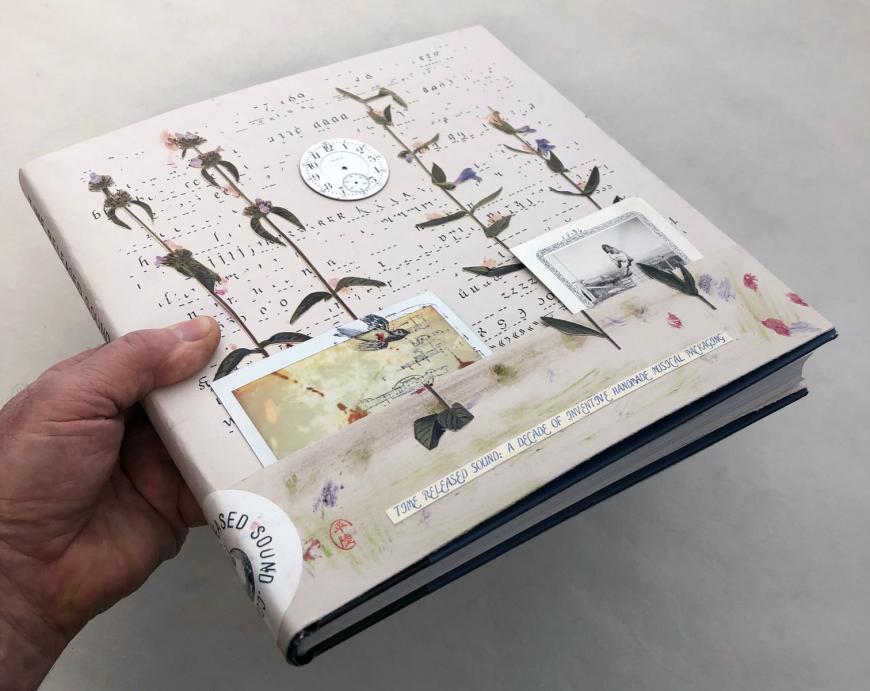
In order to more broadly share the fruits of his labor over the past decade, Herrick will be publishing a book about it all next year. “In mid 2022 we are releasing a large, lavish, 288-page, full-color, hardbound book all about the Time Released Sound music label and its first 10 years of releases and packaging designs. The book will come with two CDs of new and unreleased tracks by a selection of the musicians that we have released over the years.
“I recently spent over 20 days styling some amazing pictures with a local professional product photographer, reshooting all of our packaging inside and out. A well-known art book designer is planning the layout, featuring two-page spreads for each of the 106 releases, and much extra content, such as pages of behind-the-scenes process shots, individual release cover variations, an extensive interview, and much more.”
A Kickstarter campaign is planned to help underwrite the project, and interested parties can stay abreast of progress and news — and see and hear a lot more about the music and art — at the TRS website. For more information about the standard-version releases, including download options, check out the TRS Bandcamp page. You can contact Colin Herrick via email at colinherrick7 (at) gmail.com.







